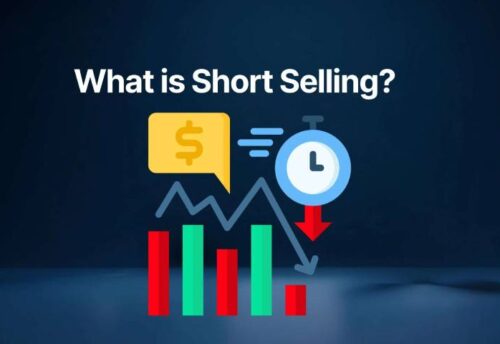
- 21/11/2025
- MyFinanceGyan
- 7 Views
- 0 Likes
- Share Market
What is Positional Trading? – A Simple and Detailed Guide
Positional trading is a popular trading method where traders hold stocks or other financial instruments for a long period—usually weeks, months, or even years. Unlike day traders who buy and sell within a day, positional traders focus on long-term price movements.
This method is ideal for people who cannot track the market daily but still want to benefit from major market trends.
What is Positional Trading?
Positional trading means buying a stock or commodity and holding it for a long time to capture large price movements.
Here, traders do not worry about small daily fluctuations. They focus on the bigger picture of the market.
To make decisions, positional traders use:
- Fundamental analysis – Study company financials, growth, sector performance
- Technical analysis – Use charts, trends, moving averages, and indicators
Time Horizon and Objective:
- The time period ranges from a few weeks to several months.
- The main aim is to benefit from big upward or downward price trends.
- Positional traders wait patiently for their target price instead of making frequent trades.
This style suits people who want a balance between long-term investing and active trading.
Types of Positional Trading:
- Futures and Options Positions: Traders use derivatives to hold long or short positions for up to 3 months. These can be risky but may offer higher returns.
- Long-Term Equity Holding: Buying strong companies with good fundamentals and holding them for months.
- Thematic Trading: Investing based on big themes like renewable energy, EV sector, AI technology, etc.
How to Select Stocks for Positional Trading?
- Identify strong sectors showing consistent performance.
- Use screening tools to filter stocks.
- Choose stocks with good past performance and clear upward or downward trends.
- Ensure good trading volume for easy entry and exit.
- Prefer mid-cap and large-cap stocks instead of penny stocks.
Using Technical + Fundamental Analysis:
Fundamental Analysis Includes:
- Revenue and profit growth
- Debt levels
- Competitive strength
- Management quality
These help decide which stock to buy.
Technical Analysis Includes:
- 50-day & 200-day moving averages
- MACD, RSI to understand momentum
- Support & resistance levels
- Volume analysis
These help decide when to buy or sell.
Risk Management:
- Use Stop Loss: Place stop loss 5–10% below buying price to protect capital.
- Diversification: Invest in different stocks to reduce risk.
- Risk–Reward Ratio: Aim for a higher reward than risk (e.g., 1:3 ratio).
Positional Trading Vs. Swing vs Day Trading:
Tips for Beginners:
- Start with a small capital.
- Avoid penny stocks.
- Maintain a record of trades.
- Don’t act emotionally.
- Follow news and market updates.
Some traders also use rollover in futures to extend their positions to the next month.
Conclusion:
Positional trading is a great option for people who want long-term gains without checking markets daily. It requires patience, good analysis, and proper risk management.
Disclaimer:
This blog is for educational purposes only. It is not financial advice or a recommendation to buy or sell any product. Always research or consult a financial expert before investing.



